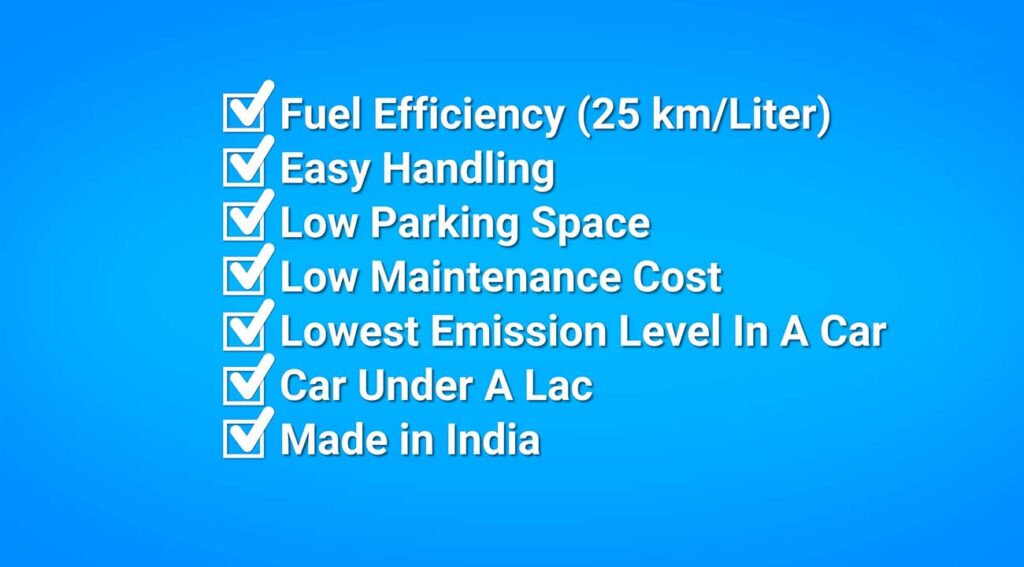Table of Contents
In 2008, The former chairman of Tata Motors – the giant of the Indian automobile industry announced the Tata Nano, a car with a pricing of 1 lakh rupee that is slightly pricier than the mediocre motorcycles. This car with four seats & a complete hatchback had a rear engine & rear-wheel drive of 623 ccs.
Despite its massive hype & affordable price, Tata Nano failed to occupy the market that much. As a result in 2019, the production of Tata Nano was shut down. It was completely a fiasco for them and in the Indian automobile industry, it was a tragedy.
Overview
In 1868, Indian Jamsetji – a Parsian descendant started the journey of the Tata Group. Jamsetji Tata was called the Father of the Indian Industry. In 1945, the nephew of Jamsetji, Jehangir Ratanji Dadabhoy Tata established Tata Engineering & Locomotive Company.
Although the company began its journey as a locomotive manufacturer, in 1954, it launched the manufacturing of commercial vehicles. In 1991, Ratan Tata, as the successor of JRD Tata, became the chairman of the Tata group. Ratan Tata is one of the key industrialists in India who played a pioneering role in the economic development of India besides the global expansion of the Tata group.
Most people in India use motorcycles & scooters for commuting. Very often, three to four or more members of the whole family ride on motorcycles or scooters which is risky & often causes accidents.
Ratan Tata in an interview with Columbia Business School said that he wanted to bring an alternative to motorbikes & scooters that would be cost-effective and safe for the people of India. Hence, in 2008, Ratan Tata announced the car’s name as “Tata Nano”.
When asked the price, Ratan Tata said that it was approximately 1 lakh rupee, which is slightly pricier than the average motorbike. It was incredibly cheap & the media took that news as hype & published Tata Nano as the People’s Car. At that time, the Maruti Alto 800’ was the only competitor of Tata Nano & its retail price was 2.99 lakh rupees. Tata Nano became the limelight of every newspaper & digital media.
In spite of focusing the media on the proper information of the car’s price, Ratan Tata started working towards reaching the target of delivery of the Tata Nano in 1 lakh rupee. Although the company had to go through lots of trial & error to bring the car into the market at 1 lakh rupee.
The designer team needed to work their fingers to the bone to design Ratan Tata’s dream car. Initially, they showed many designs to Ratan Tata but got rejected. After many attempts, the hatchback design was chosen for the Tata Nano so that Indian women wearing traditional saree could avoid any trouble in getting into the car. To include those features and keep the price reasonable, some other features needed to be sacrificed.
- One windscreen wiper instead of two.
- A thinner and lighter spare tire.
- The fuel tank is only accessible through the front hood.
- Only one wing mirror.
- No AC in the base model.
- Usage of less steel.
- No airbag.
There were some other strong selling points besides car design and affordable pricing.

There was a growing popularity of compact cars in China, Japan & other cities in Europe. Due to their compact size, these cars received good response in the city with traffic jam & insufficient parking lot. India, the second largest populous country, was considered to be a potential market for compact cars.
Maruti Suzuki Alto 800 car, during that time, was the most popular compact car in India. However, the design was not attractive at all. This is why Ratan Tata wanted to bring a model to the market which is affordable & gorgeous well. There was massive hype centering on this car in both Indian and international media because of its price tag.
People’s interest in this car continued to grow due to such hype, and 2.03 lakh units were pre-booked with full payment before its release. In 2008, Tata Motors at West Bengal’s Singur bought 997 acres of land to install the Tata Nano car production plant. Tata had to back out after the local people’s protest with the support of the opposition party of Uttorbongo as the selected land was fertile.
On October 3, 2008, they stopped construction of the production plant. Narendra Modi, the former CM of Gujrat, invited Ratan Tata to build the production plant of Tata Nano in Gujrat.
Tata announced to start production plant of Nano in Sanand, Gujrat on October 7, 2008. They finished the project in January 2010. It was said that Modi’s effort in making the production plant in Gujrat got popularity among businessmen & helped him later to win the national election.
Tata Nano’s production was delayed by 18 months due to West Bengal’s issue. In 2009, two new editions of Tata Nano, Standard & Deluxe were brought into the market. Although since the beginning, Tata Motors did not reach its desired sales target. The company had a target of selling 2.5 lakhs Tata Nano to release the car at 1 lakh rupee.
At the end of the fiscal year 2011-2012, only 74,527 units of Tata Nano were sold & which was the highest sales during the total time frame of Tata Nano. In 2012, a 624 cc engine was added to the Tata Nano’s 2012 variant. Besides, in 2013, a CNG variation was introduced. In the next two years (2013-2014), only 21 thousand units were sold & the sales went below 70%.
Later in 2015, a rear hatchback and facelift were added to Tata Nano. Another former chairman of Tata Group Cyrus P. Mistry wanted to introduce Tata Nano as a “Smart City Car” to the young generation of India. To do so, he invested another 3000 crore rupees. That year, both the interior & exterior were redesigned & several versions of 21 Tata GenX Nano were brought into the market.
Notwithstanding this, Tata Nano failed to attract customers. The sales like earlier times started reducing. In 2018, only one version of the Tata Nano was produced and in 2019, all kinds of production of the Tata Nano was shut down.
The Reasons for Failure
Poor Build Quality
The build quality of the Tata Nano was poor due to its extensive cost-cutting in its design & manufacturing. The riding experience of the Tata Nano was not that comfortable & stable due to its thin steel and small tire. Moreover, having no airbag, Tata Nano failed to pass the International safety test.
It also failed in the crash test of the Euro New Car Assessment Program (NCAP). Besides, Tata Nano did not pass the basic UN safety requirements test. Within 2 years of the launch, 4 Tata Nanos caught fire on the road. Indian customers are price sensitive, however, when purchasing a car, they are concerned about the build quality.
Because a car is a long-term investment and a luxury item for them. This is why, in the Indian market, the demand for Maruti Suzuki was high as they ensure good build quality and affordable prices.
Hence, the Indian Market plays a significant role for Suzuki & according to its financial report of the company in 2020, more than 51% of its total sales of Suzuki were generated from the Indian Market. Statista mentions that Maruti Suzuki covers 50% of all passenger cars in the Indian automobile industry.
People lost their confidence in Tata Nano as it did not maintain the build quality like Suzuki and it faced several issues one after another, although Tata Nano in competition with Maruti Suzuki, released cheap cars in the market.
Unfulfilling Promise
The selling price of Tata Nano got increased due to the plant shifting and the price hike of steel, tire rubber, and lubricant. The price of Tata Nano 2019 became even higher. Therefore, despite Ratan Tata’s promise to the Indian people for releasing the car at 1 lakh rupee, he was never able to fulfill it. Sacrificing safety and quality and lacking promised features were also noticeable.
Positioning
Seeing widespread media coverage and hype among the public, Tata Motors positioned the car as a “Low price car”. The company thought that the car would attract many customers if it was positioned in the price-sensitive market of India highlighting affordable pricing. Such positioning was a wrong move, because, in India, the car represents social status.
In the USA or Europe, cars are given more priority as a mode of transport rather than social status. However, people of the subcontinent still do not take cars as their only mode of transportation. In such a market, the positioning of Tata Nano failed because it looked pretty cheap despite being inexpensive.
To the majority of people, Tata Nano seemed to be the upgraded version of the autorickshaw. As a consequence, most of the Indians, considering their social status, were not ready to buy a car, which is referred to as the “cheap car” by the media. Tata Nano became the “Poor Man’s Car” from “The People’s Car”.
Targeting
In the beginning, the target segment of the Tata Nano was the middle-class family. The positioning was wrong. It mistakenly focused on the rural & remote people. Ultimately it failed to attract middle-class people. Tata Nano, due to its lower average speed and engine power, was unfit for driving on highways & expressways.
Next in 2015, Tata failed again even after rebranding Tata Nano as a smart city car for targeting young customers. There were better, affordable, reliable motorcycles in the market. Others either bought reliable Maruti Suzuki cars at a slightly higher price than the motorcycle or second-hand cars of different models that were available in the market.
Poor Marketing
Firstly, their ads did not maintain uniformity in the message as the company continuously changed its positioning and targeted customers. Sometimes the ads focused on middle-class segments and other times highlighted the young generation. The ads also lacked the ethnocentric emotional message where Indian consumers are largely proud of their culture and heritage.
As a result, consumers failed to relate themselves to the ads. Besides, Tata Motors did not attach any celebrity endorsement in the promotion of Tata Nano. The acceptance of celebrities in the Indian market is huge. But they did not take any initiative of doing so for the promotion of Tata Nano.
After Sales Service
The after-sales service of Tata Nano was really poor. When some of the Nanos caught fire, the company then wanted to conceal the issue and pointed the blame on the imported parts. In a similar situation, giant companies recall cars.
Tata, to conceal the matter, extended the warranty & service coverage. On the other hand, their competitors took the advantage of this situation & promoted the Tata Nano as unsafe. Until then, the reputation of Tata Nano as a brand got really worsened & people lost confidence in them.
Conclusion
Tata Motors, in spite of their attempts to sell the Tata Nano in the Indian market, failed to make their project work due to their numerous mistakes. When Tata Motors were struggling with Tata Nano cars, companies like Suzuki & Mahindra offered better cars in terms of quality & price. As a result, both Suzuki & Mahindra dominated & occupied a good position in the market. Still, there is a demand for compact cars globally.
Last but not least, if Tata Motors, if they work with the electric version of the Tata Nano and solve all the safety and design issues along with the reintroduction of Tata Nano in the global market, then the implementation of this dream project can come true.










Leave a Comment